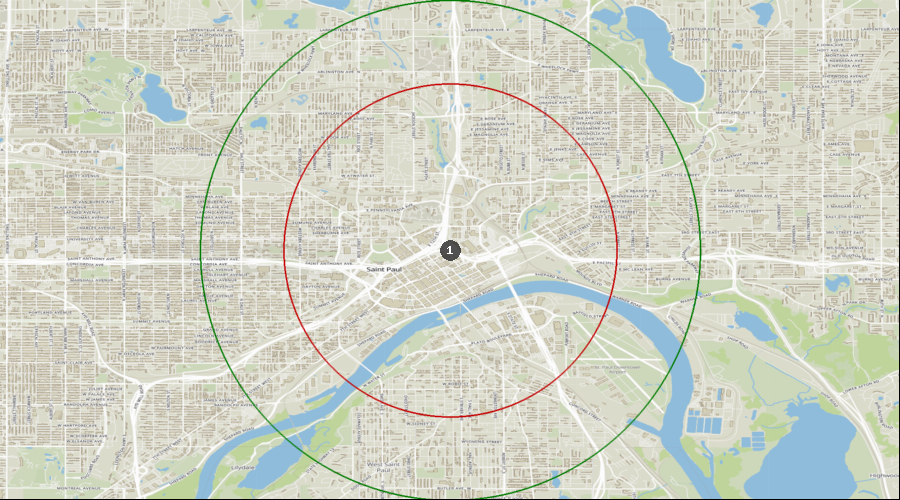![]() | Population |
St. Paul's current population is 87,653 people with 33,957 households within this smaller 2 mile radius. This area experienced positive population growth of 10.7% from 2010-2020. This area is projected to grow another 1.7% over the next five years. This is lower than the national average.
The median age of the population in this area is 33.7 which is below the state average of 39.0 years old. This area has an average household size of 2.5 persons. This area is not very family centric with 46.3% of the households being family households and with 31.6% having children in the home and 19.6% of the population being under 15 and an additional 15.1% being under 24. Another 32.0% of this area’s population is between 25 and 44 years of age and 20.7% between 45-64 years old leaving 12.5% of the population over 65 years old. These last two age groups are target age groups for dentures, partials, crowns, and other restorative work.
St. Paul has a daytime employee population of 100,039 versus a permanent population of 87,653 meaning the daytime employee population is 114.1% of the permanent population living in the area and 69.0% of the total daytime population. This is a significant daytime employee population that has a positive impact on the overall numbers.
| |
In this area, 36.4% of the population either holds a bachelor's degree or higher educational degree. St. Paul is lower than the state and higher than US average.
The dominant racial and ethnic groups of the population in the St. Paul area are White 37.0%, Black 23.0%, Native American 1.5%, Asian 24.4%, 6.0% other races and 11.9% Hispanic or Latino of any race.
|  | Table #2 Significant Demographic Characteristics |
| |
Demographic Analysis for St. Paul, Minnesota
|
|
|
|
|
| POPULATION | | | |
| Population 2025 | | 87,653 | 5,826,205 | 338,440,954 |
| 2010 Total Population | | 77,245 | 5,308,233 | 309,121,785 |
| 2020 Total Population | | 85,476 | 5,713,155 | 331,839,624 |
| Projected Total Population 2030 | 89,184 | 5,942,546 | 344,873,411 |
| Population Change, 2010 - 2020 | 10.7% | 7.6% | 7.3% |
| Annual Population Change Rate, 2025 - 2030 | 0.4% | 0.4% | 0.4% |
| POPULATION AGE BREAKDOWN | | | |
| Median Age | 33.7 | 39.0 | 39.3 |
| Under 4 years old | 6.7% | 5.9% | 5.5% |
| 5 - 9 years old | 6.3% | 6.3% | 5.8% |
| 10 - 14 years old | 6.6% | 6.3% | 6.0% |
| 15 - 24 years old | 15.1% | 13.0% | 13.2% |
| 25 - 44 years old | 32.0% | 26.6% | 26.9% |
| Number of Adults 25-44 | 28,058 | 1,552,090 | 90,938,228 |
| 45 - 64 years old | 20.7% | 23.8% | 24.4% |
| Number of Adults 45-64 | 18,103 | 1,386,421 | 82,485,679 |
| 65 years and over | 12.5% | 18.0% | 18.1% |
| Number of Adults 65 years and older | 10,998 | 1,050,210 | 61,399,291 |
| 0 - 14 years old | 19.6% | 18.5% | 17.4% |
| Number of Children 0-14 years old | 17,215 | 1,078,730 | 58,800,947 |
NOTE: All percentages are rounded. ESRI data pulled as of August 26, 2025. Data showing future dates are projections.
| | Highlighted fields signify favorable characteristics on a comparison basis with the other locations listed and/or national averages |


